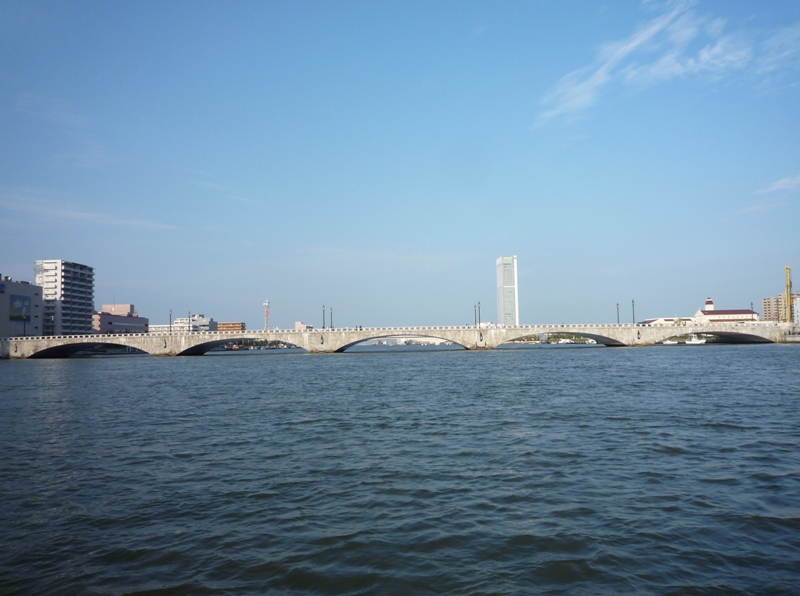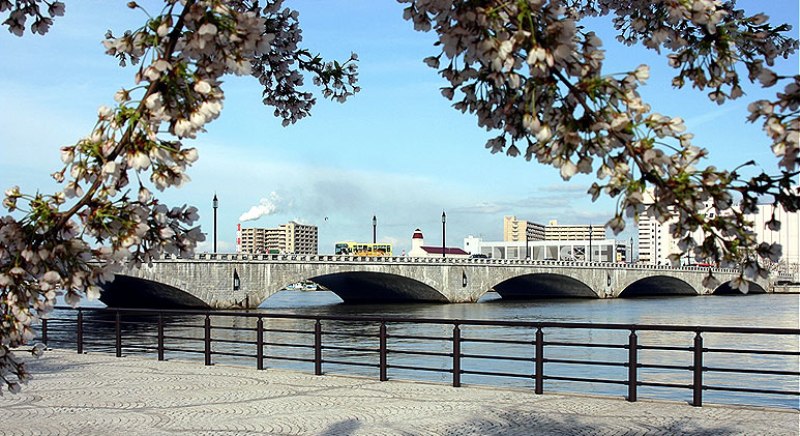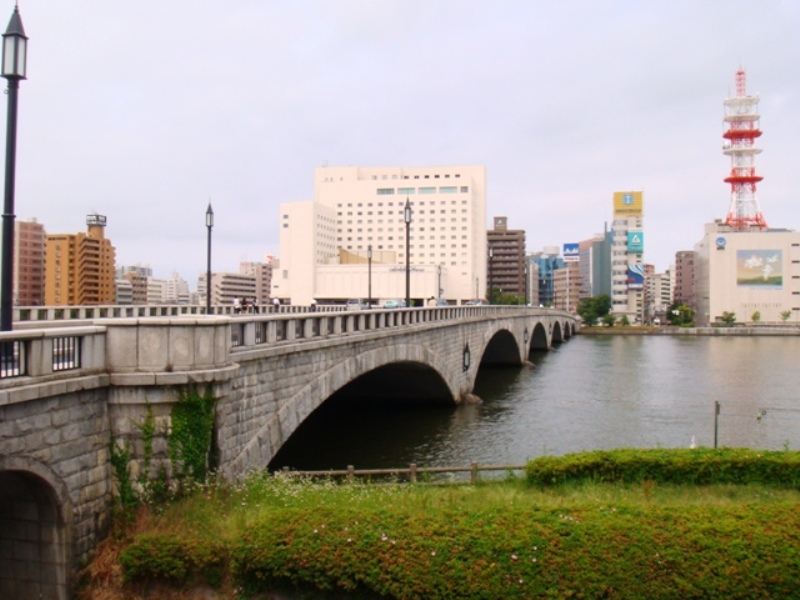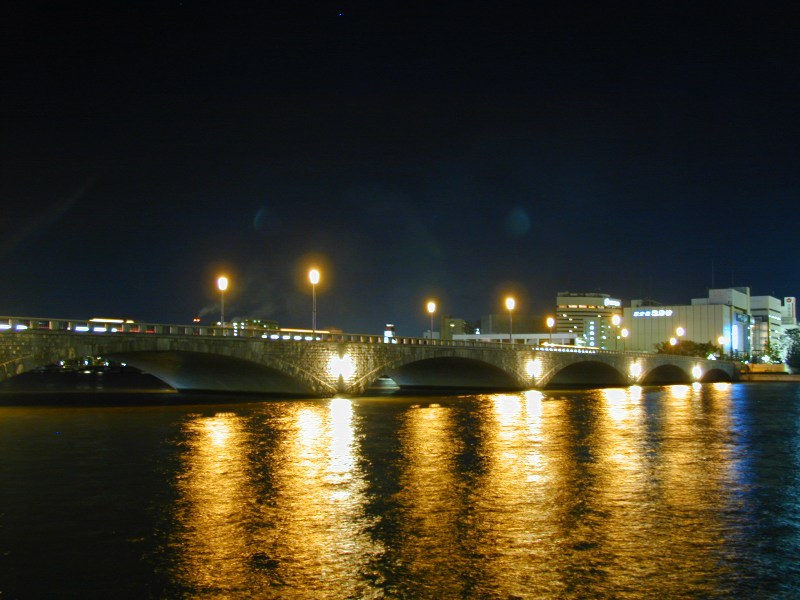| |||||||
Europe
North AmericaSouth AmericaAsiaAustralia and OceaniaAfrica |
Смотрите также: Bandai Bridge The Bandai Bridge is a bridge crossing the Shinano River in Niigata, Niigata Prefecture, Japan via Route 7. The current bridge was constructed in 1929, and was designated as a nationally important cultural property in July 2004.
Bandai Bridge Carries Car Crosses Shinano River Locale Niigata, Japan Design Arch bridge Total length 306.9 metres Wide 21.9 metres Opening date July 2004
The current bridge contains six arches and is made of reinforced concrete with granite siding. The Bandai Bridge is a prime example of large-scale concrete arch bridges from the Showa Period, and was strong enough not to collapse during the 1964 Niigata Earthquake which destroyed large sections of Niigata. Today the Bandai Bridge is considered the symbol of Niigata and is one of the city's most scenic spots.
History The first Bandai Bridge was constructed out of wood in 1886, during the Meiji Period, and was the first bridge to cross the Shinano River. In March 1908, a major fire which destroyed 1,770 houses in Niigata also destroyed more than half of the Bandai Bridge. The second Bandai Bridge was completed in December 1909, and quickly became the transportation hub of the growing city of Niigata. The new bridge was built using planks recovered from the remains of the 1908 fire as a base, and was the same size as the original model.
Due to dilapidation of the second bridge, a third version was constructed in 1929 using reinforced concrete. Because of water diversion projects along the Shinano River throughout the early 20th century, the water level at the time of construction had decreased from 770 meters to 270 meters since the construction of the first bridge. Because of this, the third bridge was far shorter yet wider in order to allow for easy passage of automobiles. Comments: 0 |
|
|||||










































